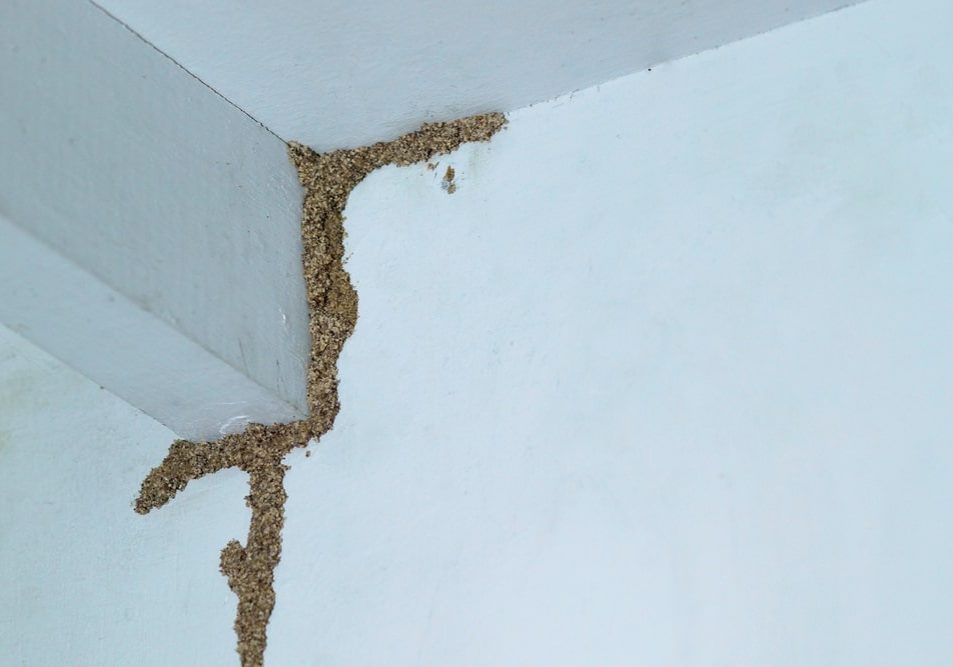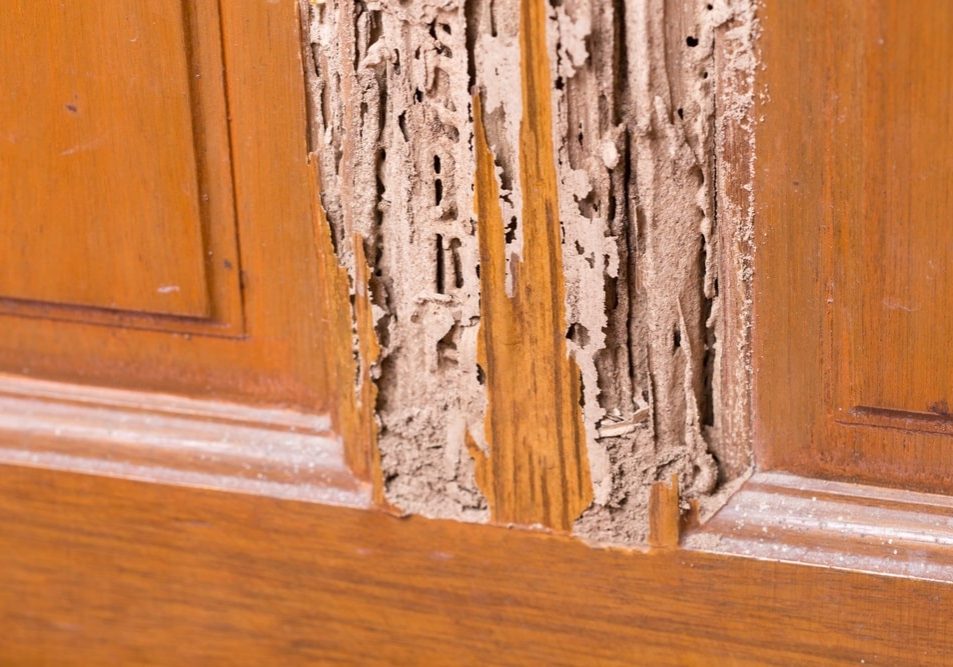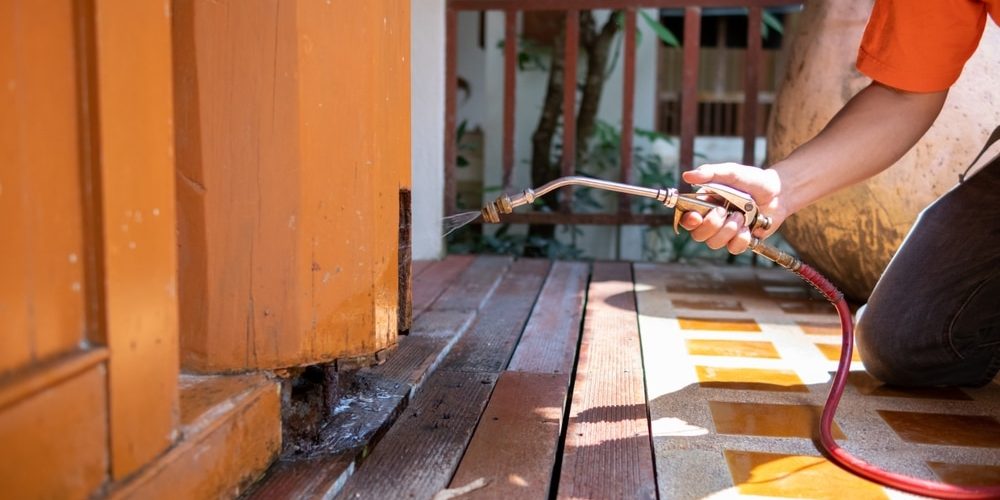Imagine this: you’ve scheduled a general house cleaning, but suddenly have come across a pile of sawdust near wooden areas or structures. This might be because of termites!
Termite infestation is a silent destroyer, often goes unnoticed until significant damage is done. In fact, according to the National Pest Management Association, in the United States alone, termites can cause an estimated $5 billion dollars in property damage each year. This reality underscores the need for effective termite prevention strategies.
This article will discuss how to prevent termite damage in your property, elaborating on the proven and tested strategies to achieving a pest-free home.
Understanding Termites
Looking at a single termite, one might not consider it dangerous, but a whole colony of them says otherwise – they can inflict serious damage to your property.
As a matter of fact, termites are a heterogenous group classified into different types, and arranged in a structured hierarchy, like the monarchs.
Here’s a closer look at the five main types of termites:
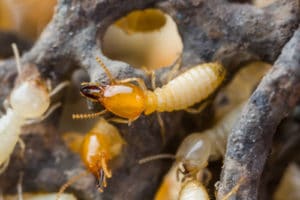
Subterranean termites are known as the “most destructive” types and are found in every state except Alaska. They exhibit typical termite behaviors, as they live in soil or moist secluded areas above ground. These termite types build distinctive mud tubes to provide moisture and protect them from the open air while they travel between their colony and food sources.
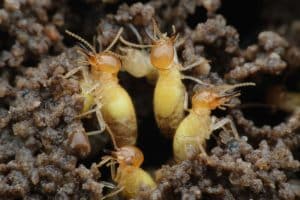
Formosan termites, the most voracious, aggressive, and devious species from the group, are originally from China but have since then invaded the Western and Southern parts of the United States. They are frankly dubbed “super termites” due to their ability to quickly consume wood like flash. They do this by building mud nests inside the walls of a structure.
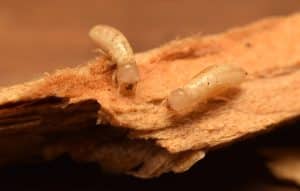
Drywood termites, mostly found in the southern tier states, from North Carolina to the Gulf Coast, are the complete opposite of their Subterranean and Formosan counterparts. This is because they do not require contact with the soil to obtain food. They mostly build nests on any “dry” wood material around the home, such as attic framings or furniture.
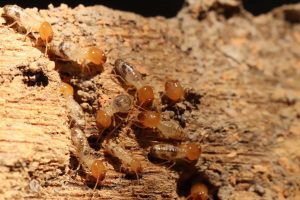
Dampwood termites, as the name suggests, infest wood with a high moisture content. In simple terms, they prefer moist and decaying wood, often found in logs, stumps, and dead trees, as their main food sources. For this reason, this species is commonly situated in the desert or semi-arid southwest areas, such as the Pacific Coastal and adjacent states.
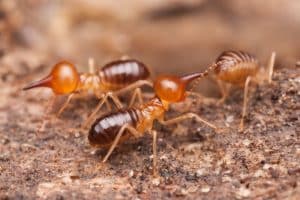
Conewood termites are the invasive species native to the Carribean but are now found in parts of Florida. They were originally called “tree termites” but were renamed “conehead termites” to alleviate the misconception that they can only be found in trees.
Such species are termed “aggressive foragers” since they do not require mud tubes but forage on the ground like ants, to obtain food. This allows them to spread quickly and cause significant damage in a short span of time.

Subterranean termites are known as the “most destructive” types and are found in every state except Alaska. They exhibit typical termite behaviors, as they live in soil or moist secluded areas above ground. These termite types build distinctive mud tubes to provide moisture and protect them from the open air while they travel between their colony and food sources.

Formosan termites, the most voracious, aggressive, and devious species from the group, are originally from China but have since then invaded the Western and Southern parts of the United States. They are frankly dubbed “super termites” due to their ability to quickly consume wood like flash. They do this by building mud nests inside the walls of a structure.

Drywood termites, mostly found in the southern tier states, from North Carolina to the Gulf Coast, are the complete opposite of their Subterranean and Formosan counterparts. This is because they do not require contact with the soil to obtain food. They mostly build nests on any “dry” wood material around the home, such as attic framings or furniture.

Dampwood termites, as the name suggests, infest wood with a high moisture content. In simple terms, they prefer moist and decaying wood, often found in logs, stumps, and dead trees, as their main food sources. For this reason, this species is commonly situated in the desert or semi-arid southwest areas, such as the Pacific Coastal and adjacent states.

Conewood termites are the invasive species native to the Carribean but are now found in parts of Florida. They were originally called “tree termites” but were renamed “conehead termites” to alleviate the misconception that they can only be found in trees.
Such species are termed “aggressive foragers” since they do not require mud tubes but forage on the ground like ants, to obtain food. This allows them to spread quickly and cause significant damage in a short span of time.
From the discussion above, you will notice how similar each termite species is to each other despite their distinct habitat and characteristics, and that is the type of environment they are most attracted to. Termites thrive in areas that provide a combination of moisture, food (primarily wood and cellulose-based materials), and shelter.
Professional Treatments
DIY measures are helpful for the prevention and control of termite infestations. However, when it comes to treating an existing invasion, professional intervention is necessary. Established pest-control companies like Emtec Pest Control offer a range of termite treatment solutions, tailored to effectively address and manage such attack:
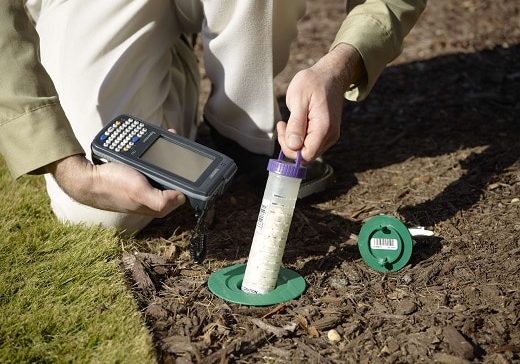
At Emtec Pest Control, we are committed to safe and responsible pest control. We understand that your family’s safety is your number one priority, so we make it our priority, too.
If you have any other questions about any of these pests or pest control for your home or business, contact your Oklahoma pest control experts at Emtec Pest Control by calling us or by filling out our online contact form.

